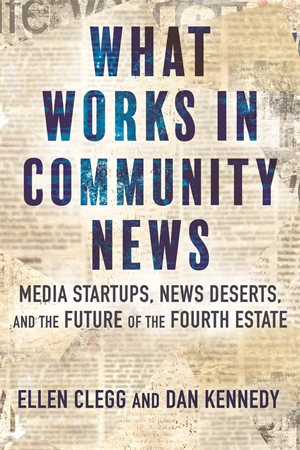
One of the more innovative efforts at saving newspapers from chain ownership is winding down, although the papers themselves remain protected. The Colorado Sun announced Wednesday that it would transfer its ownership shares of Colorado Community Media (CCM), a chain of 24 weekly and monthly papers in the Denver suburbs, to the nonprofit National Trust for Local News, which led the effort to buy the papers two years ago. The Sun had been given a stake in CCM in return for helping to run the papers.
The reason given for pulling out was that the Sun is in the process of converting from a for-profit public benefit corporation to a nonprofit, which I wrote about recently for Nieman Lab. A story in the Sun that appeared Wednesday urged nonprofit status for CCM as well: “Just as we believe that nonprofit is the right fit for The Sun, we believe it’s a good fit for these weeklies, too. That will be a decision for the Trust and the board of directors of the Colorado News Conservancy, the parent company of CCM.” No money is changing hands. (The Conservancy is the entity established by the National Trust and the Sun to run the CCM papers).
Sun editor and co-founder Larry Ryckman said on X/Twitter: “We’ve been proud co-owners of Colorado Community Media for 2 years & wish it well in this new chapter. They’re doing great work & deserve your support.” Linda Shapley, publisher of CCM, was quoted in the Sun as saying: “I’m grateful for The Sun’s support at a time that was most critical for our future At Colorado Community Media, we’re excited to be part of the evolving Colorado news ecosystem, and we’re dedicated to serving our communities with timely, factual news and information.”
The Sun and CCM are the subject of a chapter in “What Works in Community News,” a book about the future of local journalism by Ellen Clegg and me that will be published in January. In September 2021 I spent nearly a week in Denver reporting on Colorado’s media ecosystem. Obviously that ecosystem is still in flux, but the period covered by our book ends in late 2022.
I believe what was taking place in Colorado back then is a story still worth telling: the founding of the Sun by 10 journalists who’d quit The Denver Post following deep cuts by its hedge-fund owner, Alden Global Capital; the Sun’s early hopes of raising money through blockchain technology; its unique governance structure; and its participation in the acquisition of CCM.
Ellen and I look at our book not as a standalone entity but, rather, as the hub of an ongoing story that also comprises updates to our website, a podcast (Shapley, National Trust executive director Elizabeth Hansen Shapiro, and former Denver Post editor Greg Moore have all been guests, and we hope to have Ryckman on once the book has been released), and an evolving social media presence (we’re currently on X/Twitter and Mastodon, but that may change).
So of course we want you to read our book. But we also hope you’ll turn to our other platforms to keep up on the latest.
Leave a comment | Read comments






 Ellen Clegg and I are thrilled to go public today with our book,
Ellen Clegg and I are thrilled to go public today with our book, 